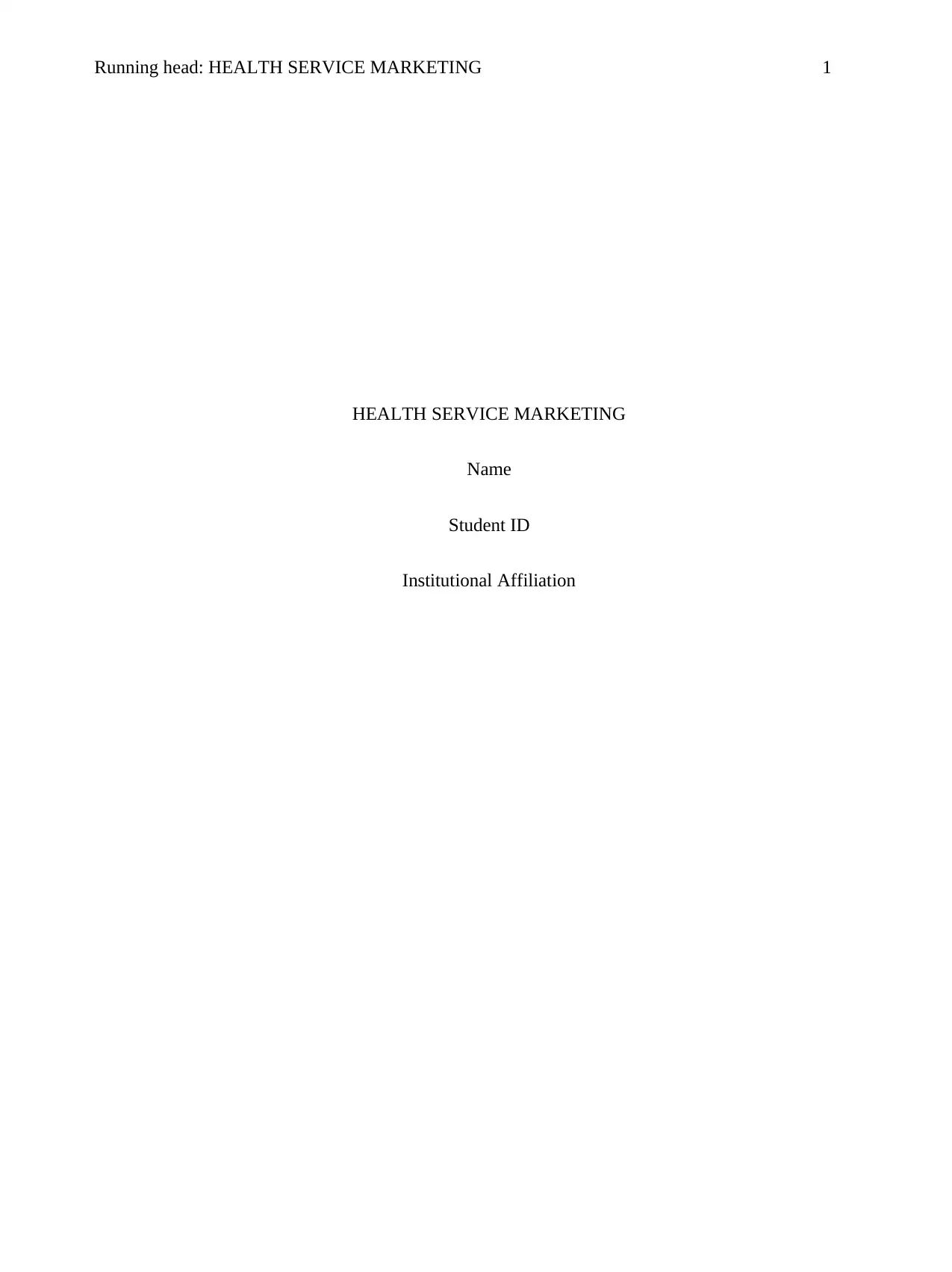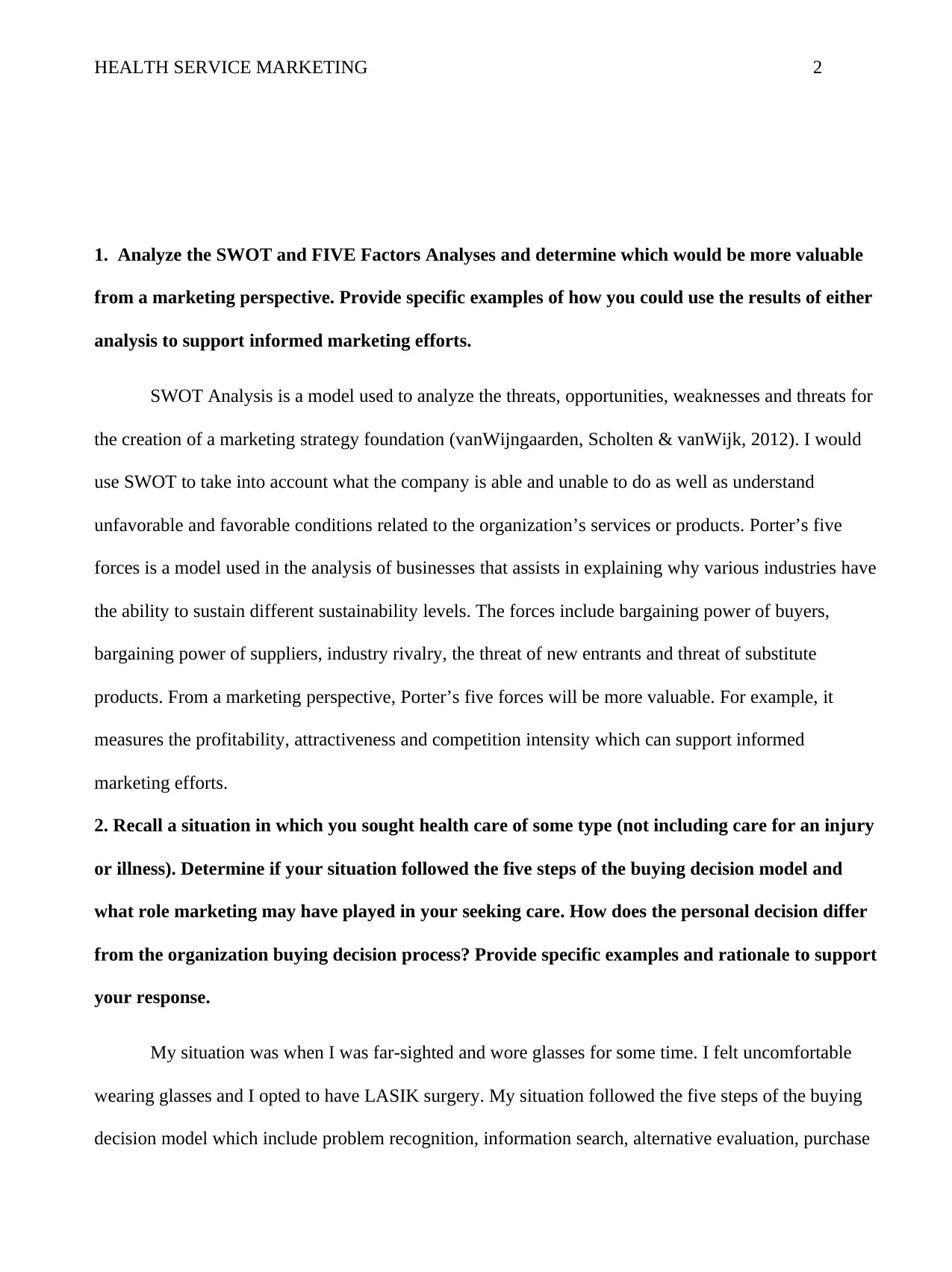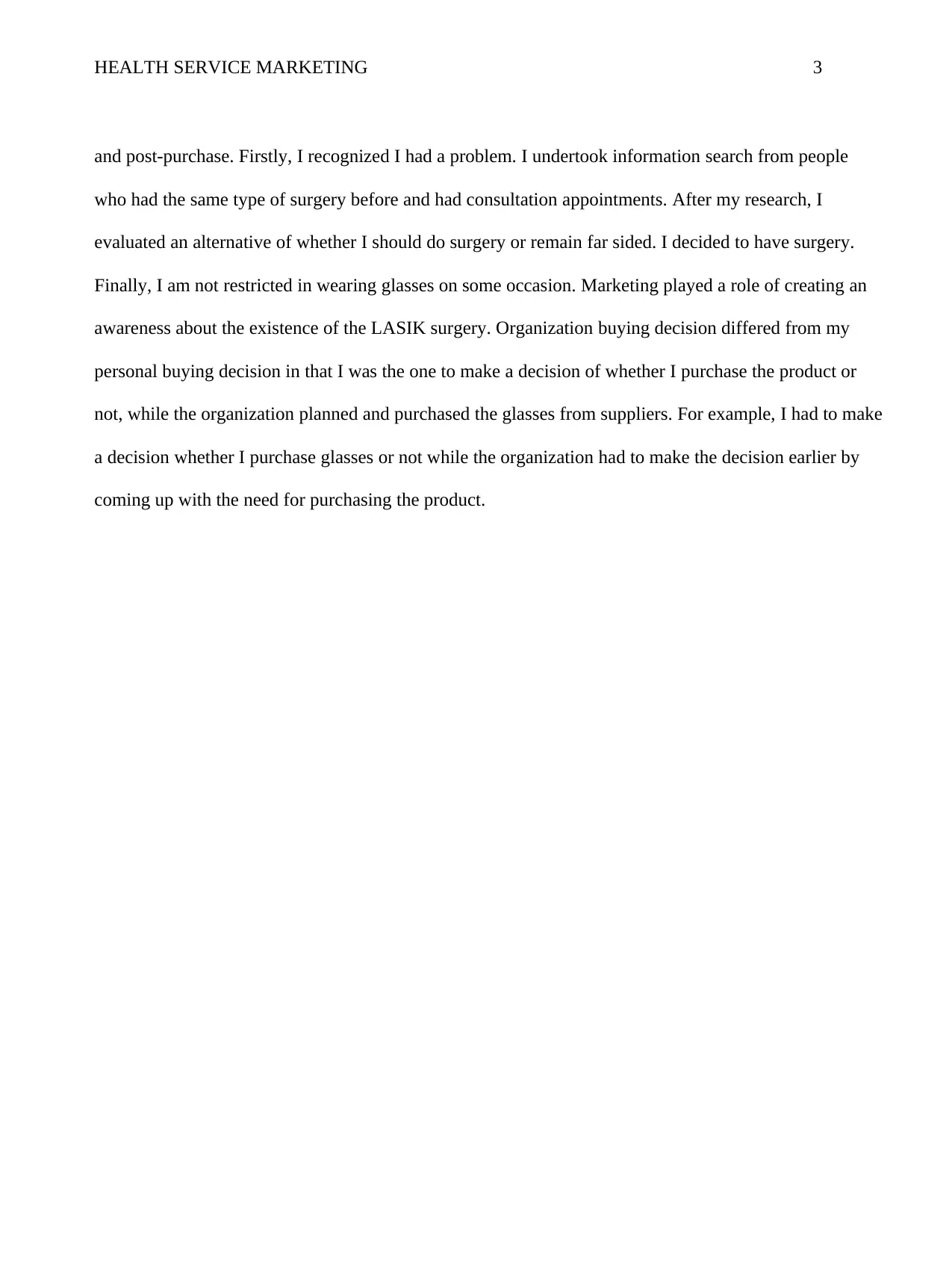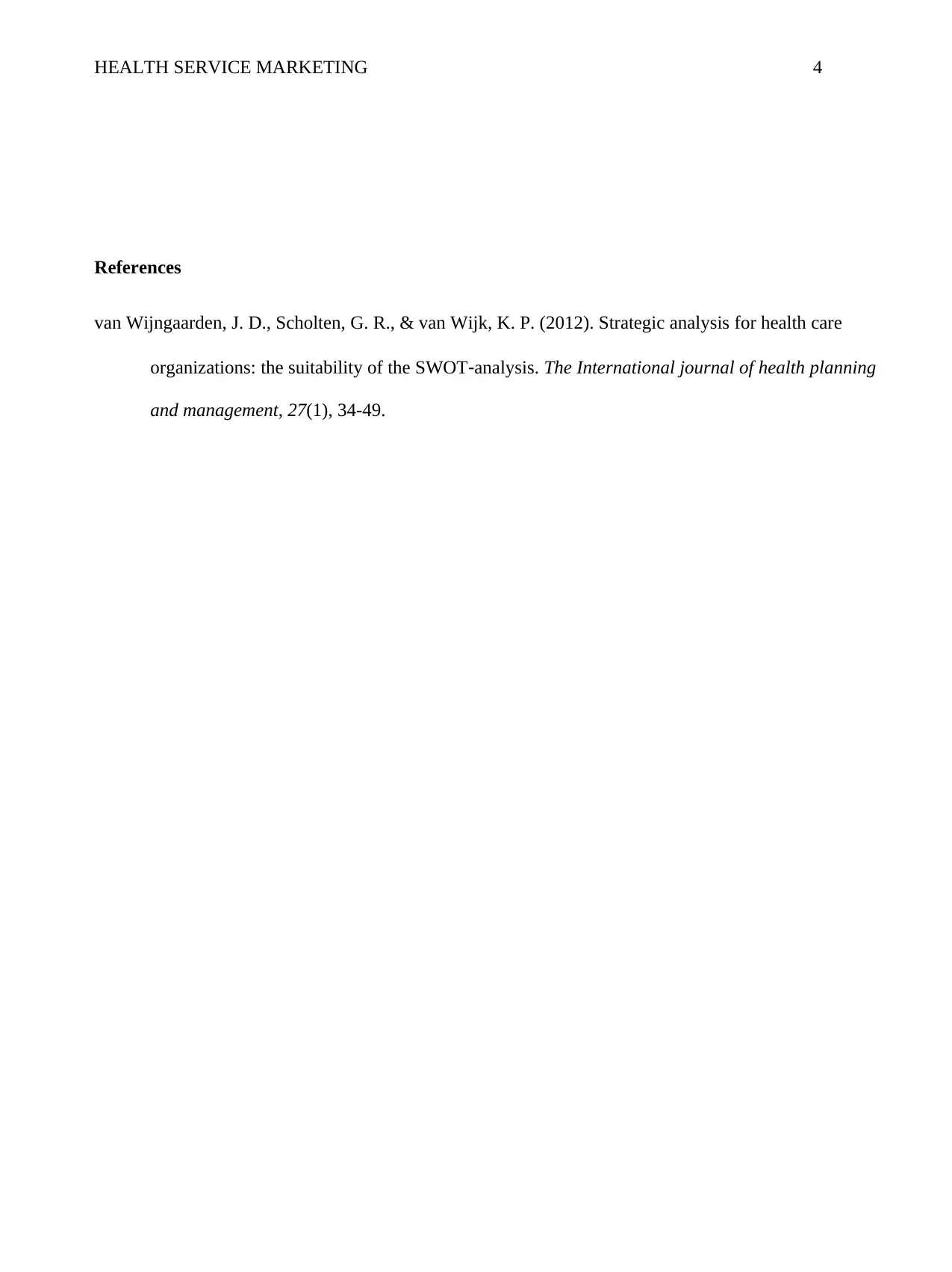Health Service Marketing Report: SWOT, Porter's Five Forces Analysis
VerifiedAdded on 2023/06/04
|4
|560
|496
Report
AI Summary
This report analyzes health service marketing strategies, comparing the value of SWOT and Porter's Five Forces analyses from a marketing perspective, with examples of how each can inform marketing efforts. It also examines a personal healthcare decision (LASIK surgery) in the context of the five-step buying decision model, contrasting it with organizational buying processes. The report highlights the role of marketing in creating awareness and influencing healthcare choices, referencing the differences between individual and organizational purchasing behaviors. The study concludes by referencing strategic analysis for healthcare organizations and the suitability of the SWOT analysis.
1 out of 4










![[object Object]](/_next/static/media/star-bottom.7253800d.svg)